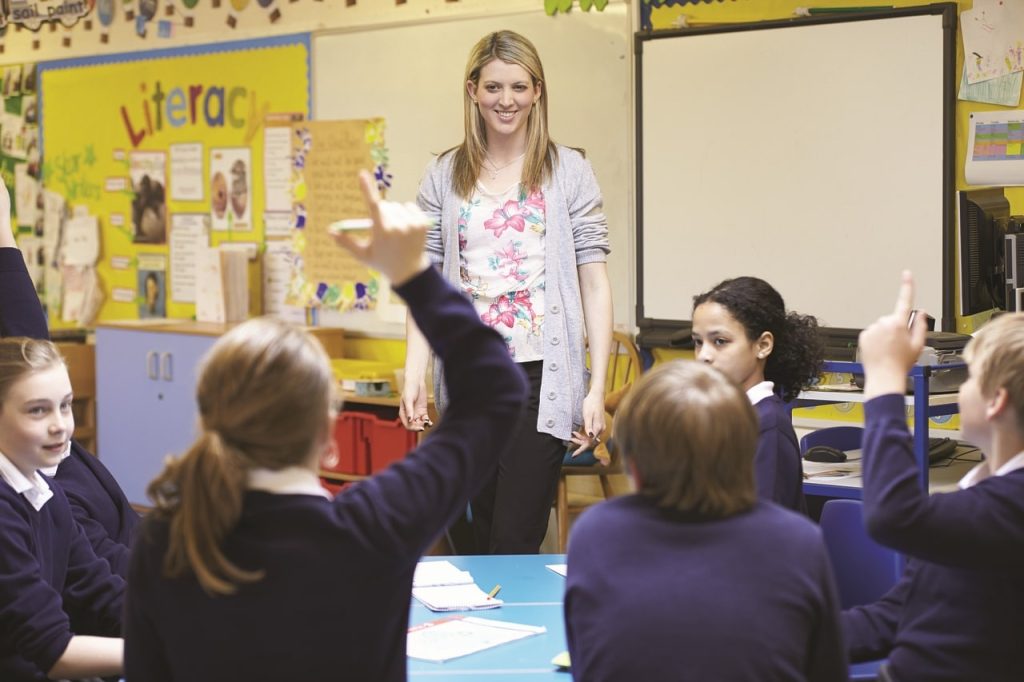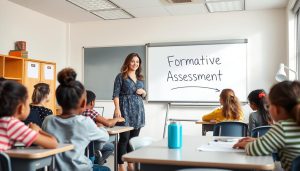Let’s be real: Every teacher has a classroom full of different types of learners, each with their own strengths and weaknesses.
Some students might be visual learners who can’t get enough colorful diagrams and images. Others might be auditory learners who could listen to us talk all day long (well, maybe not all day, but you get the point!). And let’s not forget about the kinesthetic learners—these kids love to get hands-on with their learning!
With such a diverse group of learners, it’s up to you to ensure that you understand and cater to everyone’s needs. I mean, can you imagine how boring it would be if you just stood at the front of the room and lectured all day?
As it stands, it’s important to tailor your lesson plans to suit various learning styles for a more engaging classroom environment. This approach not only makes learning enjoyable. It also leads to better academic outcomes and an inclusive classroom environment.
So, let’s discuss the different types of learners and how you can create lesson plans that work for everyone!
The 4 Types of Learners
Visual Learners
A picture really is worth a thousand words as far as visual learners are concerned. They light up when they see pictures, maps, or graphs that illustrate new concepts.
When concepts have a visible form, they click for visual learners in a profound, memorable way. They appreciate learning styles that engage their strong visual processing abilities.
Characteristics of visual learners
So, what makes a visual learner tick? Well, for starters, they have a vivid imagination and can visualize concepts in their mind’s eye. They often prefer reading materials that are chock-full of images, charts, and graphs. Plus, they’re quick to spot patterns and relationships between ideas. In terms of taking notes, visual learners prefer creating mind maps and using color coding to organize their thoughts.
Strategies for teaching visual learners
Now, here’s the fun part. How can you teach these visual learners in a way that resonates with them? One easy strategy is to include plenty of visual aids in your lessons. Think diagrams, flow charts, videos, and even memes (yes, memes can be educational!). Encouraging students to create sketches or infographics can also help.
But, visual learning doesn’t have to be limited to the classroom. Assign projects that allow students to flex their creative minds. You can ask them to design posters, create presentations, or even make short videos. The more opportunities you give visual learners to express themselves through visual mediums, the more engaged they’ll be about learning.
Auditory Learners
Auditory learners are the students who are all ears in class! These types of diverse learners love nothing more than listening to explanations, discussions, and even a good story or two. For auditory learners, hearing information is the key to understanding and retaining it.
Characteristics of auditory learners
What sets these types of learners in the classroom apart? Well, auditory learners are great listeners and can follow verbal instructions. They recall almost everything they hear, whether it’s a lecture, song lyrics, or even a casual conversation. Auditory learners also enjoy participating in class discussions and debates. Plus, they may even talk through problems or ideas out loud to better understand them.
Strategies for teaching auditory learners
One simple strategy is to incorporate more verbal explanations and discussions into your lessons. This could mean using storytelling to introduce new concepts or hosting class debates. You could also encourage students to ask questions and share their thoughts. Using mnemonic devices, rhymes, and songs can also help make learning more memorable for auditory learners.
Another great way to engage auditory learners is by including audio resources in your lessons. Think podcasts, audiobooks, and even recorded lectures. Giving students the opportunity to listen to information at their own pace can help those struggling with reading and writing tasks.
Reading/Writing Learners
Reading and writing learners love nothing more than curling up with a good book or putting pen to paper. These students thrive on the written word and excel at processing information through reading and writing.
Characteristics of reading/writing learners
Reading and writing learners always have their noses in a book or a pen in their hand. They love to read and can easily get lost in a novel or a textbook. These types of diverse learners have excellent vocabulary and grammar skills and often enjoy writing essays and stories. What’s more, they find it easy to remember what they’ve read and can quickly summarize and analyze written information.
Strategies for teaching reading/writing learners
So, how can you cater to these word-loving learners in the classrooms? First, you can incorporate plenty of reading and writing activities into your lessons. Encourage students to read independently, write essays, and take detailed notes during lectures. Providing clear written instructions and handouts can also be a big help for these learners.
You can also assign plenty of reading and writing tasks. Have students write essays, research papers, or even creative stories to help them engage with the material on a deeper level. Encourage these different types of learners to read different texts, such as articles, novels, and poetry, to expose them to various writing styles.
And don’t forget the power of peer review and collaboration! Have students work together to revise each other’s writing or organize a book club where they can analyze texts as a group.
Kinesthetic Learners
Last but not least, we’ve got the kinesthetic learners.
These students learn best by doing, touching, and experiencing things firsthand. They can’t sit still for too long and are always eager to get their hands dirty.
Characteristics of kinesthetic learners
Kinesthetic learners are the kind of students who can’t sit still. They fidget, tap their feet, or doodle in the margins of their notebooks. But don’t mistake this for a lack of interest. These students are simply wired to learn through movement and physical activity. They often excel in sports, dance, or theater, and they have a talent for building and creating things with their hands.
Strategies for teaching kinesthetic learners
So, how can you engage these active types of learners in the classroom? One key strategy is to add plenty of hands-on activities and projects into your lessons. Think science experiments, art projects, and even role-playing exercises.
Another practical approach is to provide opportunities for movement and physical activity. Encourage students to take breaks or stretch between lessons to help them stay focused. You can also include physical activities in your lessons. For instance, let these students act out scenes from a book or play games that involve movement.
Importance of Identifying the Types of Learners Preferences
Why does it matter to know your students’ learning styles? Well, think of it like this… If you were a chef, wouldn’t you want to know your diners’ dietary preferences before whipping up a meal?
The same goes for teaching! Identifying your students’ learning preferences can help you tailor your lessons to their strengths. It can also help them learn in the way that works best for them.
How to Determine the Types of Learners
Identifying students’ learning styles is easier than you might think. Here are a few methods to try out:
Surveys and questionnaires
One of the easiest ways to get a sense of your students’ learning preferences is to simply ask them! You can use pre-made surveys or questionnaires, like the VARK (Visual, Auditory, Reading/Writing, Kinesthetic) questionnaire, or create your own! Just make sure to keep the questions clear and relevant to your students’ learning experiences.
Classroom observations
Another way to assess learning styles is to watch and listen to your students in action. Pay attention to how they engage with different types of activities and materials.
Do they seem more focused during hands-on projects or visual presentations? Do they take part more actively in group discussions or individual writing tasks? Observing your students’ behavior and preferences can give you a sense of their dominant learning styles.
Student feedback and self-reflection
Encourage learners to reflect on their strengths and weaknesses. Also, provide opportunities for them to give feedback on what teaching methods and activities they prefer. You can do this through one-on-one conferences, class discussions, or even anonymous surveys.
Wrapping Up: Embracing the Different Types of Learners in the Classroom
At the end of the day, tailoring your teaching approach to accommodate various learning styles doesn’t have to be difficult. The first step is acknowledging that your classroom contians unique learners who absorb information differently. Once you’ve got that down, it’s all about going the extra mile to ensure everyone has an equal opportunity to succeed.
Sure, it takes more creativity and effort to craft lesson plans that cater to different types of learners in the classroom. But hey—that’s what being an awesome teacher is all about! And the best part? Seeing your students thrive and excel makes it all worth it.
The good news is; you don’t have to tackle this challenge alone. There are plenty of online resources available to help you out.
Credits For Teachers offers continuing education courses to help you understand your student’s needs and create engaging lesson plans.
With these courses, you’ll feel proud of your classroom skills. Most importantly, you’ll finally get the compensation you deserve.
Choose from our self-paced teacher continuing education courses and improve your practice today.
Happy teaching!
FAQs
What are the four types of learners and their characteristics?
The four types of learners are visual, auditory, reading/writing, and kinesthetic. They learn best through seeing, hearing, reading/writing, and hands-on activities, respectively.
What type of learner is most common?
Visual learners are the most common, as about 65% of people are visual learners.
What are kinesthetic learners good at?
Kinesthetic learners are good at learning by doing activities and simulations. They learn best through a hands-on approach and retain information best when they can experience tasks physically.
What is the difference between reflective learner and active learner?
Reflective learners prefer to think things through and reflect on experiences. They learn well by reviewing what happened and thinking deeply about concepts.
Active learners prefer hands-on learning through practicing and experiencing new concepts rather than just thinking or observing. They learn best when they are actively doing something rather than reflecting on the experience.




